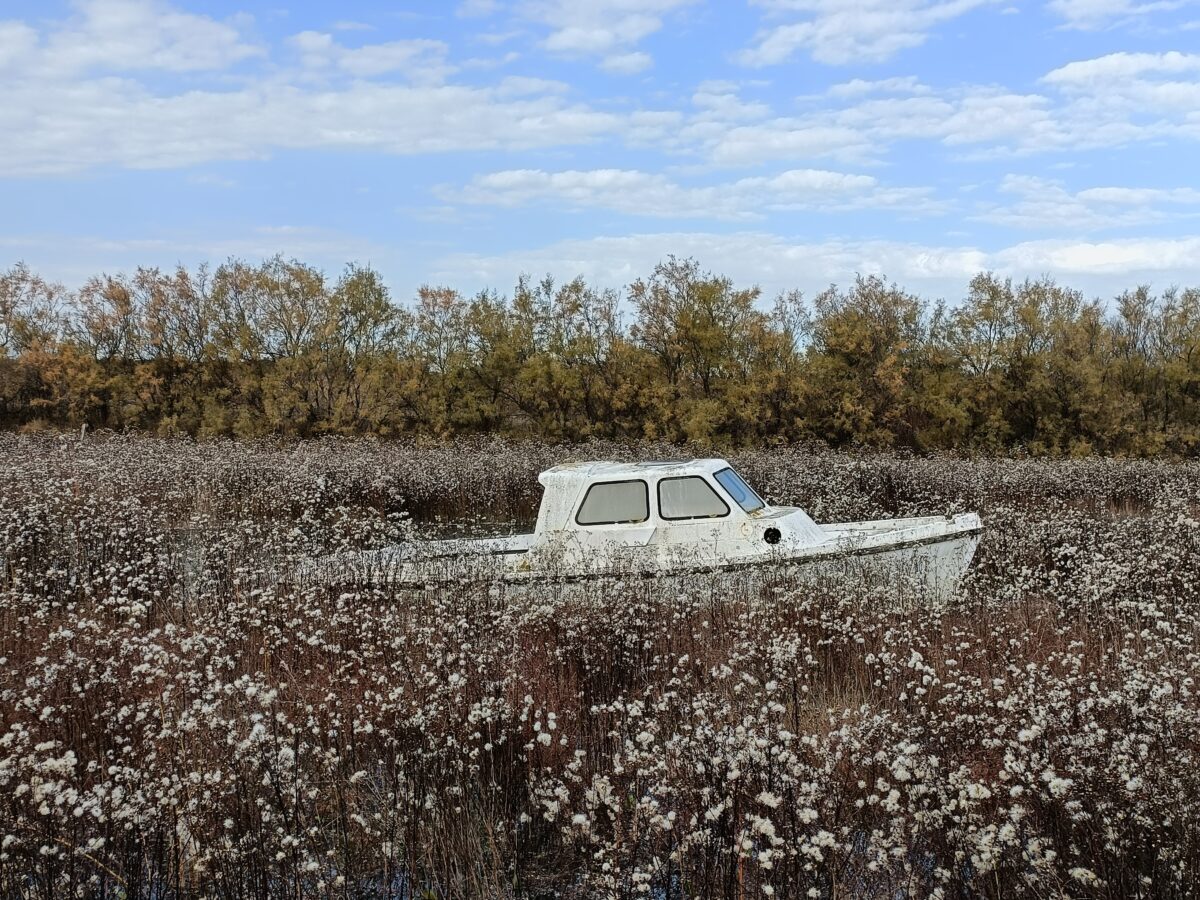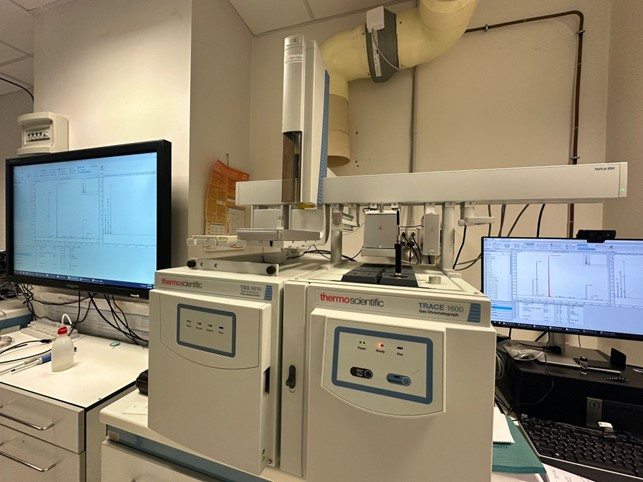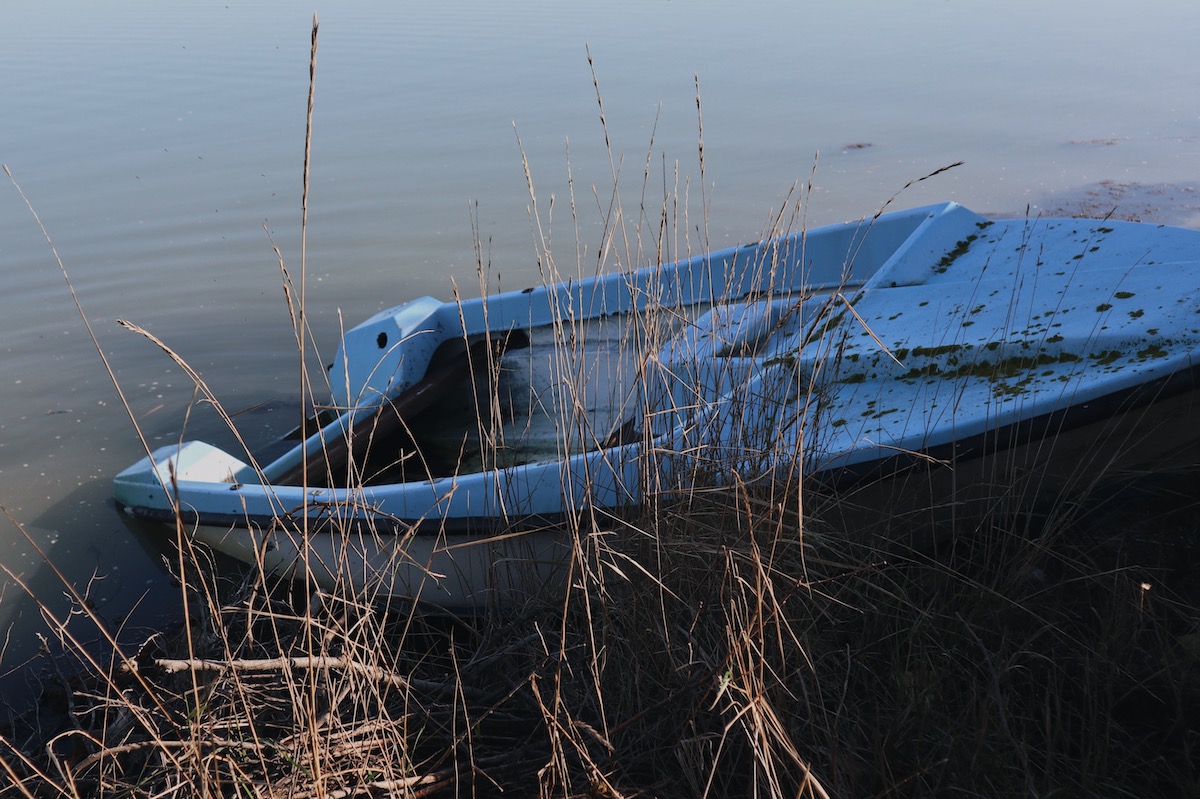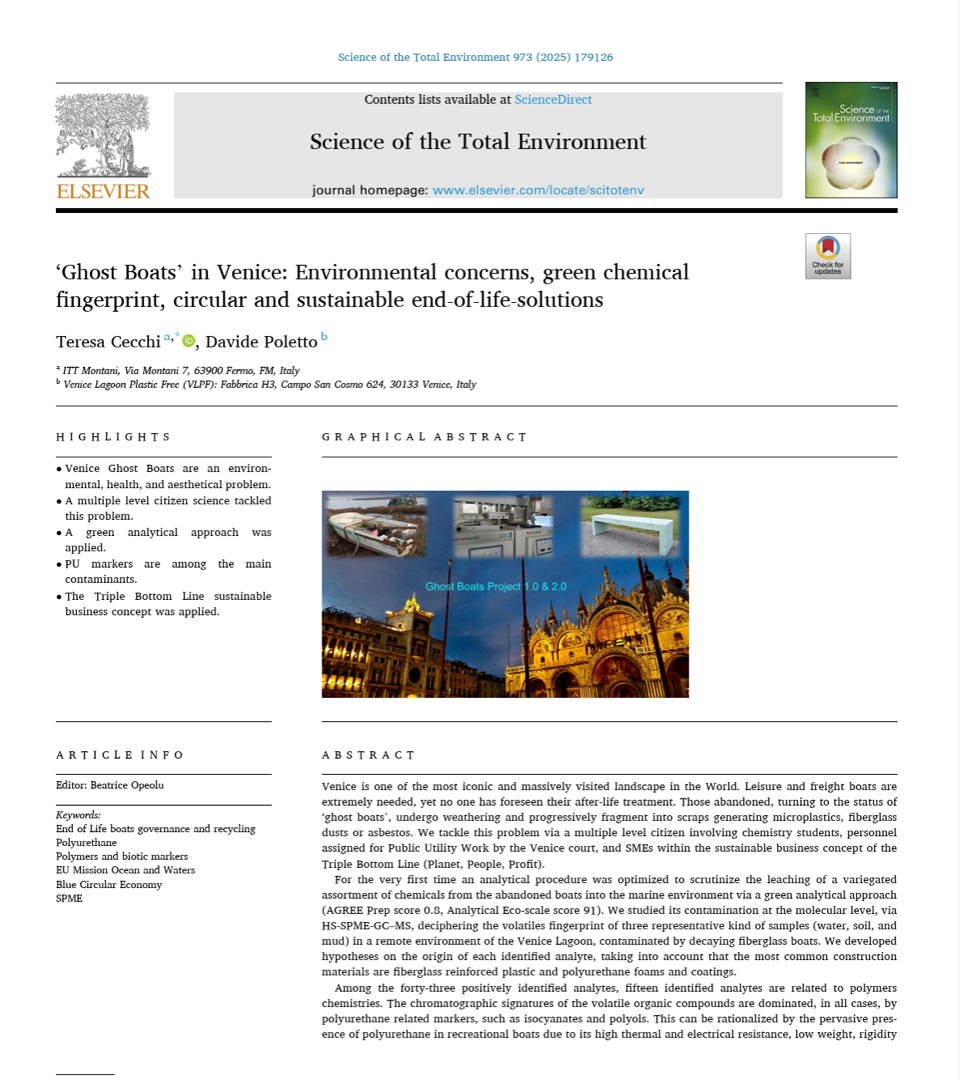Venice Lagoon Plastic Free is pleased to announce the publication of the paper
“Ghost Boats’ in Venice: Environmental concerns, green chemical fingerprint, circular and sustainable end-of-life-solutions“ in the prestigious international journal Science of the Total Environment!
This publication is the result of the joint work of Professor Teresa Cecchi from the G. and M. Montani Technical Institute, the lead author, and Dr. Davide Poletto, director of VLPF.
The paper examines the chemical release from end-of-life boats abandoned in the environment, as well as recovery and recycling pathways, thanks to VLPF’s partnership with GEES Recycling in Aviano. This initiative is part of VLPF’s permanent program, The Ghost Boat Programme, which is elinsted among the activities of the European Union’s Mission Ocean and Waters.
What Are Ghost Boats?
Ghost Boats are abandoned vessel wrecks scattered across the sandbanks, waterways, and canals of the Venice Lagoon. It is estimated that thousands of these boats lie either sunken or stranded, often for many years, in locations that are hard to reach and rarely frequented—yet deeply cherished and respected by us.

These abandoned boats contribute to the spread of macro- and micro-contaminants from resins, fiberglass, paints, and metals. Additionally, by obstructing canals, they can pose navigation hazards depending on tidal conditions, while also degrading the landscape and natural heritage of Venice and its Lagoon—recognized as a UNESCO World Heritage Site since 1987 for its exceptional environmental and cultural value.
VLPF has launched a permanent program to identify, remove, and recycle every Ghost Boat from the Venice Lagoon, including its components, fiber-reinforced plastic (FRP) materials, metals, and plastics.
Key Findings of the Paper
This study addresses the Ghost Boat problem through an innovative collaborative approach, involving chemistry students, NGOs, and small and medium-sized enterprises (SMEs) specializing in the circular economy. The research is framed within the Triple Bottom Line sustainability model (Planet, People, Profit).
Notably, the study optimized a fine-tuned analytical procedure to identify the molecular fingerprint of a wide range of chemicals released into the environment by abandoned boats. Samples were collected from three neighboring sites in the Cavallino Treporti area of the Venice Lagoon, where fiberglass recreational boats had been left for several years.
Water, soil, and mud samples were taken in triplicate and analyzed at the molecular level using HS-SPME-GC-MS:
HS-SPME (Headspace Solid Phase Microextraction) allows for the extraction of volatile and semi-volatile compounds from samples without the use of solvents, making it a highly eco-friendly analytical technique.
Its “greenness” was evaluated using two universally recognized scales (AGREE and Ecoscale).

GC-MS (Gas Chromatography-Mass Spectrometry) separates and identifies the extracted analytes with high precision.
43 different analytes were identified, including: 15 polymer-related compounds, 17 biotic environment-related substances, others originating from fossil fuels, pharmaceuticals, and common chemicals.
Some plant-derived compounds were also detected, likely of anthropogenic origin, as they are commonly found in personal care products and detergents.
Particularly significant was the detection of molecular markers associated with polyurethane depolymerization—a material widely used in boats.Certain compounds, such as toluene diisocyanate and toluene diamine, raise concerns due to their hazard classifications (Regulation (EC) No 1272/2008).
These substances are toxic to aquatic life and human health. However, toluene diisocyanate hydrolyzes relatively quickly, limiting its accumulation.
Encouragingly, removing abandoned boats could significantly improve water quality. This aligns with previous findings from a study on the Venetian Lagoon’s self-purification capacity (https://doi.org/10.1016/j.scitotenv.2021.146951).
Fiberglass—the primary material used in boat construction—poses a persistent environmental and health risk. This is due to its chemical and physical similarities to asbestos: Fiberglass fibers, composed of silicon and oxygen combined with other inorganic materials, degrade over time, releasing dangerous airborne particles.

The study’s results confirm the potential risks associated with abandoned boats. Under the precautionary principle, the research highlights the urgent need for removal to protect both the environment and public health. It also underscores regulatory and governance challenges, which VLPF is addressing through the principle of subsidiarity.
The phenomenon of Ghost Boats, particularly linked to end-of-life recreational vessels, is expanding across coastal and island states in Europe, contributing to the pollution of marine and inland waters.
However, in the absence of national regulations or dedicated European directives, civil society can play a leading role in:
- Exploring new recycling pathways
- Organizing innovative management models
- Developing a circular economy for end-of-life boat composites
This approach aligns with the principle of subsidiarity and the EU Mission for Oceans and Waters 2030, of which VLPF is a part.
The paper also outlines potential reuse solutions for materials recovered from Ghost Boats, including their application in urban furniture—a concept already successfully tested and commercialized by GEES Recycling.
Finally, the study introduces a conceptual distinction between End-of-Life Boats (EOLB) and Ghost Boats, offering a clearer classification for future management strategies.
Read the full article here: : ‘Ghost Boats’ in Venice: Environmental concerns, green chemical fingerprint, circular and sustainable end-of-life-solutions – ScienceDirect

